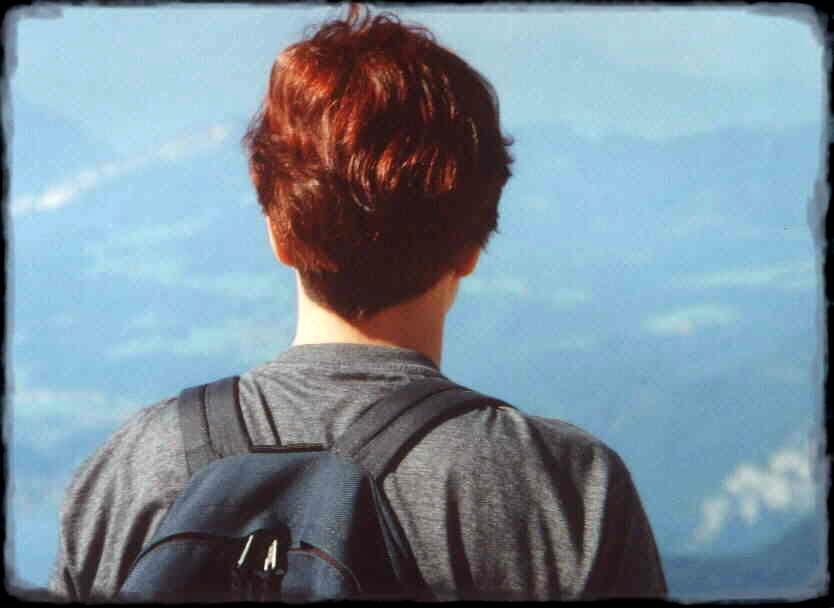Middle
Ages - Persecution and Expulsion
One of
the first medieval sources dealing with the presence
of Jews in Munich reports about an act of violence.
According to the "Nuremberg Memorbuch" the
outraged mob murdered 67 Jews in 1285 after they had
been accused of "ritual murder". According
to the records, those jews who were not already
murdered in the streets, fled into the synagogue,
which was eventually set on fire by the crowd.
Nevertheless,
Jews took up residence again in Munich during the
following decades. there is, however, litte
information about the life of this medieval
community. Between 1380 and 1442 there is secure
indication for the existence of a synagogue. But for
this period the records report another pogrom and the
explusion of the Jewish population from Munich. The
synagogue was converted into a church.
It was
not until the 18th century that the ban on residence
was relaxed and Jews could again take up residence in
Munich.
"Hoffaktoren"
(purveyors to the court) - Aron Elias Seligmann-von
Eichthal
"Hoffaktoren"
purveyed capital and goods to the courts of nobles,
the court society and the high civil servants. Since
the 16th century this position was held almost
exclusively by Jews. They supplied all the goods that
were necessary as expenditure for maintaining a royal
household, particularly luxury goods from abroad.
Apart from that, they supplied the military with
grain, meat, spirits and horses.
Thus
they built up a relationship of mutual trust with the
prince, which used to be rewarded by privileges. The
purveyors to the court could be exempted from special
taxes for which Jews were usually liable, and from
"Leibzoll". They were subject to the
jurisdiction of the court, which meant that they were
released from municipal and district jurisdiction, as
well as from rabbinical jurisdiction.
Their
style of life was considerably different from that of
the other members of the Jewish community, most of
whom were living in poor conditions. Nonetheless,
they spoke up for the interests of the Jewish
community, often successfully. Owing to social
advancement in the 19th century, however, many
"purveyors to the court" with their
families converted to Christianity.
Emancipation
- Moritz Guggenheimer
The
Bavarian jews were not granted full equality of civil
rights until the Constitution of the German Empire of
1871. During the previos decades the State of Bavaria
had tried, by way of a legislation that was
comparatively reactionary, to restrict the rights of
the Jews. By means of a "Jews Register"
they tried to keep the proportion of Jews in the
population as low as possible.
The
fact that Moritz Guggenheimer, a Jewish citizen,
presided over the council of the authorized
representatives of the capital and royal seat from
1870 on, was a decisive signal for the emancipation
of the Bavarian Jews. The office was considered to be
the most important position of trust within a
community. Under the leadership of Guggenheimer, some
important communal projects of infrastructure were
tackled, among other things, the abattoir and cattle
yard, the waterworks and the sewerage.
Lines
of Conflict - Between Orthodoxy and Reform
As
early as in the first half of the 19th century, there
were conflicts between liberal and orthodox members
of the Jewish community, which, however, did not
escalate violently until the 1870s. The introduction
of organ music during synagogue services became the
focus of the controversy. The liberal members of the
Jewish community - who were certainly influenced by
Christian liturgy - wanted organ music to
"render particular dignity, solemnity and beauty
to the ceremony".
The
vehement resistance of orthodox Jews against this
innovation was in vain. When the first sound of the
organ was heard in April 1876, this brought about the
formation of the society "Ohel Jacob"
(Jacob's tent). Its purpose was to build a separate
synagogue for the orthodox congregation. In 1892,
after numerous difficulties, they could build an
orthodox Jewish place of worship in
Herzog-Rudolf-Strasse.
In
spite of considerable dissent in questions of faith
and synagogue service, the leading representatives of
the orthodox and liberal communities made a genuine
effort, during the following years, to save the unity
of the Jewish community.
Integration
- Philipp Loewenfeld
For
Philipp Loewenfeld, a lawyer, a social democrat, and
a dedicated republican, there was only one answer to
this question. Like most of the members of the
liberal religious community of Munich, who
represented the majority, he considered himself a
Jewish German, and Germany was not only the country
of his birth, but also "his country".
The
process of integration was twofold: their
emancipation and equality as citizens promoted their
willingness to assimilate to their non-Jewish
environment. At the same time the willingness of the
surrounding society to integrate the Jews grew.
The
Jewish Germans, who had been residents in Germany for
many generations, did not only have very close ties
with the regional and local culture, but had an
essential share in the high standing of this culture
by their own creative contributions. The diversity of
Jewish ways of life in Germany at the beginning of
the 20th century was wide. It ranged between these
extremes: uncompromising dissociation from the
surrounding society which was shaped by Christianity
and was constituted in a civil and secular way, on
the one hand; assimilation and entire abandonment of
Jewish identity and religious orientation on the
other.
"Eastern
Jews" in Munich - Josef Kupfer
About
1900, the religious community of Munich enjoyed
another period of growth. It was not only the
anti-Semitic pogroms in Russia, but also the
appalling poverty in the "schtetl" of
eastern Europe that brought about emigration on a
large scale. The new Jewish inhabitants of Munich
from eastern Europe, many of whom took up residence
in Isarvorstadt, soon represented one fifth of the
Jewish community.
The
jewish newcomers had to face enormous problems of
integration. They were often received with reserve
and mistrust by the established Jewish community. The
non-Jewish public, the town and state authorities
considered them as undesirable foreigners. The way of
life of many of the east European jews, which seemed
to be strange, served as a welcome pretext for racist
propaganda. A great part of the eastern Jews were
categorically refused naturalization.
Antisemitism
- Rabbi Leo Baerwald
The
antisemitism of the late 19th century became more and
more aggresive and violent. The racist hatred of
humankind, nurtured by nationalist and racist
("voelkisch") ideologies, queried the
emancipation and integration of the German Jews in a
categorical way.
In
December 1891, the "Deutsch-Sozialer
Verein" was the first expressly anti-Semitic
party to apply for admission with the police in
Munich. Other groups and agitators followed and soon
generated a vivid anti-Semitic malicious campaign,
warned with strident slogans against the infiltration
of Jews' national loyalty and love of their country.
During
the twenties, there were numerous violent assaults
against Jews in Munich. The right-wing extremist
hatred was first of all directed against well-known
citizens, as for example Sigmud Fraenkel, a respected
merchant, and Leo Baerwald, the Rabbi of the
community.
National
Socialist Persecution - Carry Brachvogel
After
1933, Jews in Munich were gradually pushed out of
public life and were defamed as a contemptible group
of "aliens to the community". The acts of
violence of the year 1938 - the demolition of the
imposing main synagogue as early as in June and
finally the brutal terror of the night of the pogrom
of 9th/10th November - were disastrous peaks on the
way to the "final solution of the Jewish
problem". This had already been traced out
bureaucratically by the National Socialists from 1933
on by numerous degrading regulations and decrees.
At the
beginning of the thirties, the Munich Jewish
community numbered 10.000 members. After 1933 more
than 7.000 Jews of Munich emigrated abroad, where
they found refuge at first. 3.000 Jews stayed behind.
From 1941 on they were deported from Munich and were
murdered in Kaunas, Piaski, Minsk, Auschwitz and
Theresienstadt. Among these was Carry Brachvogel, a
writer.
Postwar
period - rebuilding the religious community
In the
spring of 1945, 400 citizens of Jewish origin were
still living in Munich. In march 1946, their number
had already risen to 2.800; among them were 796
persons who had been members of the former Jewish
community. They were joined gradually by tens of
thousands of liberated prisoners from concentration
camps, who wanted to emigrate from Munich to
Palestine or the United States.
For
many years the Bavarian capital remained shelter and
intermediate stop for about 120.000 Jews, many of
whom had to stay because of the restrictive British
regulations for immigration to Palestine, and they
became members of the Israelite Religious Community.
The
community had been re-established on 19th July, 1945,
in the Jewish old people's home in Kaulbachstrasse
65. Since May 1947 the renovated synagogue in
Reichenbachstrasse has served the community as their
main synagogue.
In the
course of the decades the religious community has
grown. A varied cultural and social life has been
re-established in the town. Owing to the arrival of
Jews from the former Soviet Union since the 1990s,
the community, with about 8.000 members, has now
almost reached its former size.
.L I N K S
..... .........
.........
 Regreso
al comienzo de esta página Regreso
al comienzo de esta página |
 Regreso
a "Judaísmo"...................
Regreso
a "Judaísmo"................... |
| |
 |
|
 |
